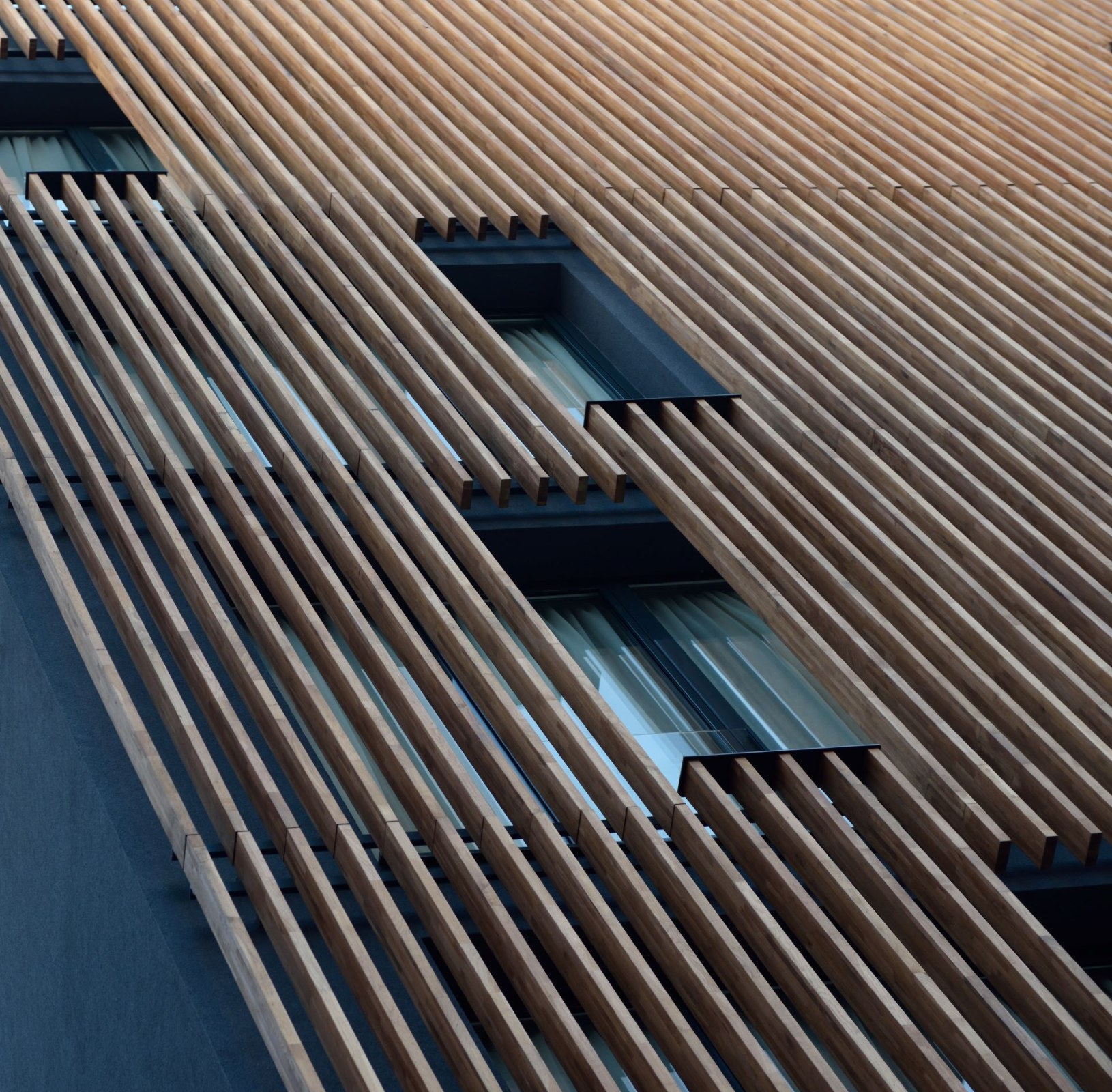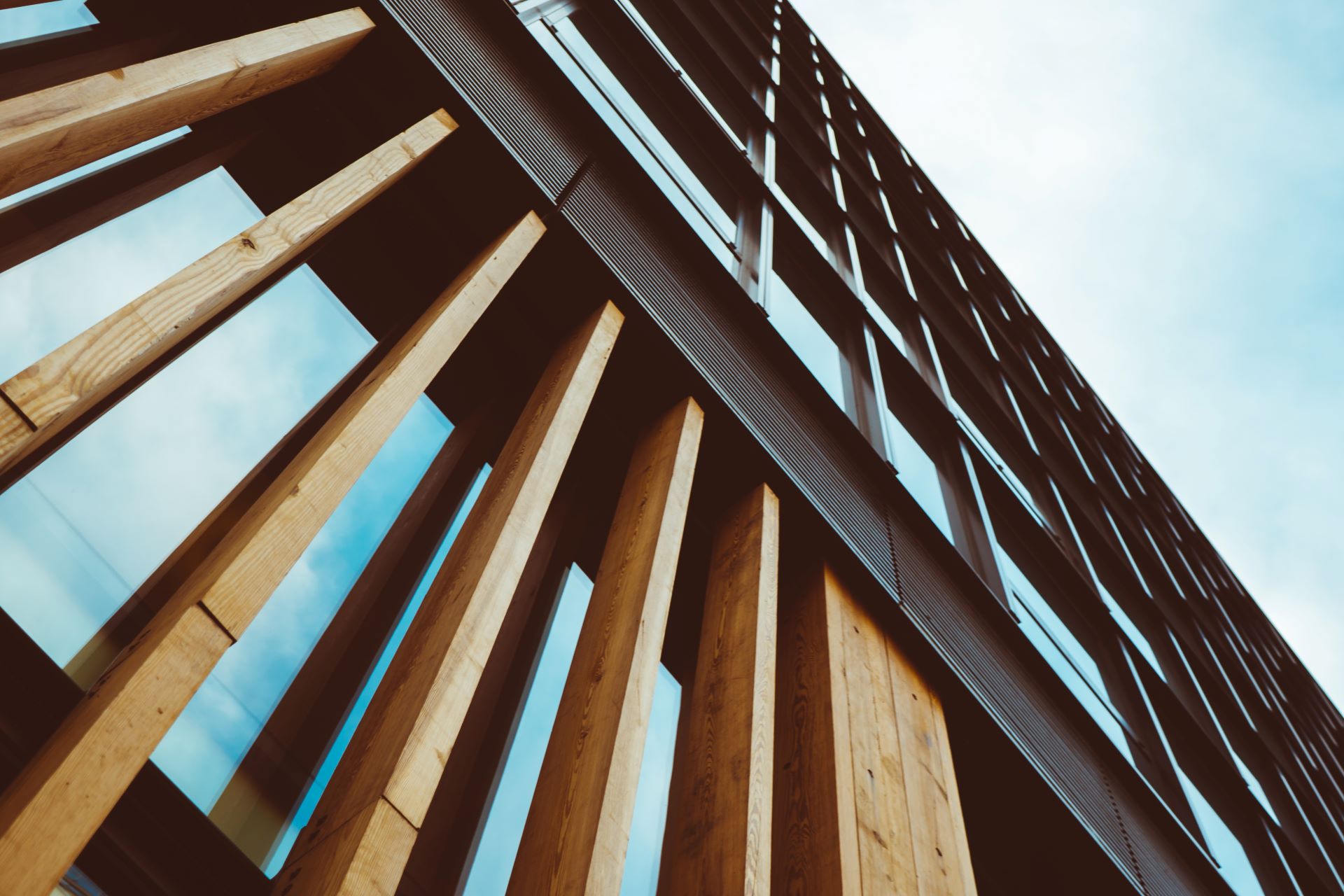
The Art of Contrast: Pairing Metal Accents with Rich, Dark Wood Walls
When we’re designing indoor and outdoor spaces, few things work as well together as natural materials. They deliver natural imperfections and textures that add tremendous character. They also connect us to the natural world far better than something like drywall or plaster ever could.
When dealing with structural elements, perhaps no two natural elements work as well together as dark wood walls and metal accents. The rich warmth of the wood creates a soft and homey feel while the contrasting metal accents deliver a harder edge that juxtaposes perfectly alongside those dark wood walls.
There are numerous ways to mix these natural elements, and some work better than others. Much of it depends on how you use the space. Before you get into the design phase of your project, it’s helpful to understand how each of these materials perform both aesthetically and acoustically.
Benefits of using wood in design
Wood has been a feature of building design since the first humans began building and arranging things. As a readily available, sturdy, and craftable natural material, it’s simply always made sense. Using wood wall details in our interior and exterior designs is a trend that continues to this day, due to the numerous benefits of using wood in design.
Wood delivers visual appeal
One of the biggest reasons people choose to go with wood is because it looks great. The natural imperfections and variations in grains, colors, and textures in hardwood walls create a calming visual appeal that most of us love. We can finish it to complement the color palette we’re working with and provide a vibrant texture that perfectly accents the rest of the room. Wood feels alive.
Using different timber or wall panel colors will deliver different results. Using walnut wood paneling for walls will deliver a darker look than using oak panels for walls, so understanding how species differ in color and texture will allow you to achieve the exact look you’re after. With such a wide variety of wood species and finishes available on the market today, you can achieve nearly any look you’re after.
If the species you ultimately choose is particularly expensive, you can find much more economical pricing tiers by going with veneers as opposed to solid wood. If you’re looking to create a classic and sophisticated aesthetic, dark wood wall paneling will likely produce the cleanest results with added benefits. In this day and age, panels are almost always the best option for introducing wood elements into your interiors.
Wood enhances sound
Wood also gives the sound in any space a beneficial bump. That’s because, when it comes to acoustics, wood is one of the most sought after materials on the market. It is one of the few building materials that both absorb and reflect sound waves. This is due to the fact that, while wood is naturally porous, it is also hard and reflective.
Each species strikes a different balance between reflective and absorptive, but you can get the exact balance you’re after with the right panels. Panels deliver acoustically, no matter which species you choose, meaning incorporating dark wood walls into your design can pull double duty by enhancing both the look and sound of the space.
Metal in design
Metal delivers its own set of benefits when used in design. It’s a hard, masculine material that’s also available in a wide variety of finishes, from brushed to polished. The acoustic properties also directly contrast with the properties of wood, making the two a perfect pair. Both visually and acoustically, metal picks up where wood leaves off.
Metal creates natural focal points
Whenever we’re looking to break up vast areas created by dark wood walls with interesting accents, metal fits the bill as a viable solution. Polished metal naturally reflects light and adds contrast to brighten spaces. Depending on the level of polish or finish, the amount of light it reflects may be more or less. As it ages, metal can even take on a natural patina that adds additional character.
Metal is durable
Another benefit of decorating with metal is that it’s an incredibly durable material. This low maintenance material will outlast most of the other furnishings in the room. That durability is mainly due to the strength of the material. However, that strength can contribute to an abundance of sound wave reflections if not addressed.
Metal reflects sound waves
In addition to reflecting light, metal also does a great job of reflecting sound waves. It’s hard and dense, and impacting sound waves have nowhere to go but back into the room. This may be troublesome if you’ve got too many reflective surfaces, but when metal accents are paired with nice dark wood walls, the two often balance each other beautifully.

Designing with dark wood walls and metal accents
Finding the right materials to deliver the results you’re after isn’t tough, but it does require a little knowledge about what’s out there. Centering wall decor around wood and metal may put undue stress on the underlying frame if the materials are too heavy. Additionally, if they’re too reflective or absorptive, you could end up with acoustical issues. Let’s look at some ways to get what we want without any downsides that we don’t.
Finish dictates style
One of the biggest little details that will define a room’s style is the finish of the wood. Rough, rustic cut woods can create a cozy, vintage feel, while well-sanded and polished woods can deliver a more luxurious look. We use texture to convey the feelings we want associated with the space. We also use color.
Nothing sets off metal accent pieces like black and dark wood interior walls and floors. Dark, neutral tones also look great for years to come. Their popularity doesn’t wane due to new fashion trends and they work with nearly any design style you can imagine. If you want dark wood walls with loads of benefits, natural walnut acoustic slat wood wall panels will deliver it all.
Choose the right materials for each space
Another consideration you’ll need to make before you begin is what type of rooms are receiving the treatment? A hotel lobby and an office hallway are two very different spaces. Going with black wood interior design in a hallway can absorb light and make it feel small. Dark wood walls with metal accents in a hotel lobby, on the other hand, creates a classy look that can add perceived value to your establishment.
The space will dictate the right material choice. Going with wood paneled hallways on the lighter end of the spectrum and pairing that with darker metal accents will brighten up the space. Using flexible wood paneling can give irregularly shaped rooms a dramatic curve that adds motion to the space, so that may be the thing that perfectly sets off your interior design. A professional decorator can fill you in on all the ways contrast and curves work to your advantage or disadvantage.
Balance your aesthetic and acoustic needs
As important as the right look may be, great sound is equally important. You don’t want people yelling and straining to hear over excess noise in the room. Mixing dark wood walls with metal accents can create an atmosphere where echo and reverberation cause problems, if you aren’t mindful of the balance.
Too many reflective surfaces is a recipe for excess noise. Reducing the amount of hard, smooth surfaces in the room is an effective way to combat audio reflections. Microperforated panels allow you to hide sound wave absorbing surfaces in plain sight. Here’s how they work.
Microperforated panels have thousands of tiny holes in them. They are small enough that you won’t notice them unless up close, but they are effective at allowing some sound waves to pass through the panels to the other side. What is usually behind wood paneling? There are two main answers here.
Nothing
Some panels have nothing behind them but the structure they’re hiding. In this case, many sound waves that pass through the tiny holes on your panels become trapped behind the panel. Some will re-emerge through the holes and into the room again, but not before taking the edge off any echo or reverb in the room. This is a great way to get the smooth wall paneling you’re after while minimizing the acoustical issues associated with hard, reflective surfaces.
Acoustical backing
If you want to get the most out of your microperforated flat wall panels, applying an acoustical backing will deliver the best results. This acoustical backing absorbs sound waves and converts them from vibrational energy into heat energy, a process known as sound damping. This effectively eliminates those waves from the equation, reducing the likelihood that you’ll encounter audio issues in your space.
Mixing reflective and absorptive surfaces creates a pleasant audible ambiance you’re sure to notice. Too many reflective surfaces and the room gets loud quickly. Too many absorptive surfaces and the room sounds dead. Balance the two with quality wood and metal wall hangings and you’re sure to love the results.
Use quality materials
It’s tough to create a high end look with bargain basement materials. The cost cutting often comes at the expense of craftsmanship, which can lead to shoddy appearance and subpar performance. Using quality materials in your design will allow you to create the atmosphere you’re really after.
Crafting dark wood walls with luxury wood paneling gives you all the aesthetic benefits of wood, but at a nicer price point and additional acoustical benefits. Working with a firm that specializes in wall panels provides you with the experience and knowledge to ensure you get things right the first time around.
If you’re interested in learning more, reach out for a consultation. We can help you choose the right wood panelling for hallways, lobbies, and anywhere else you could use the warm feel of natural materials.




